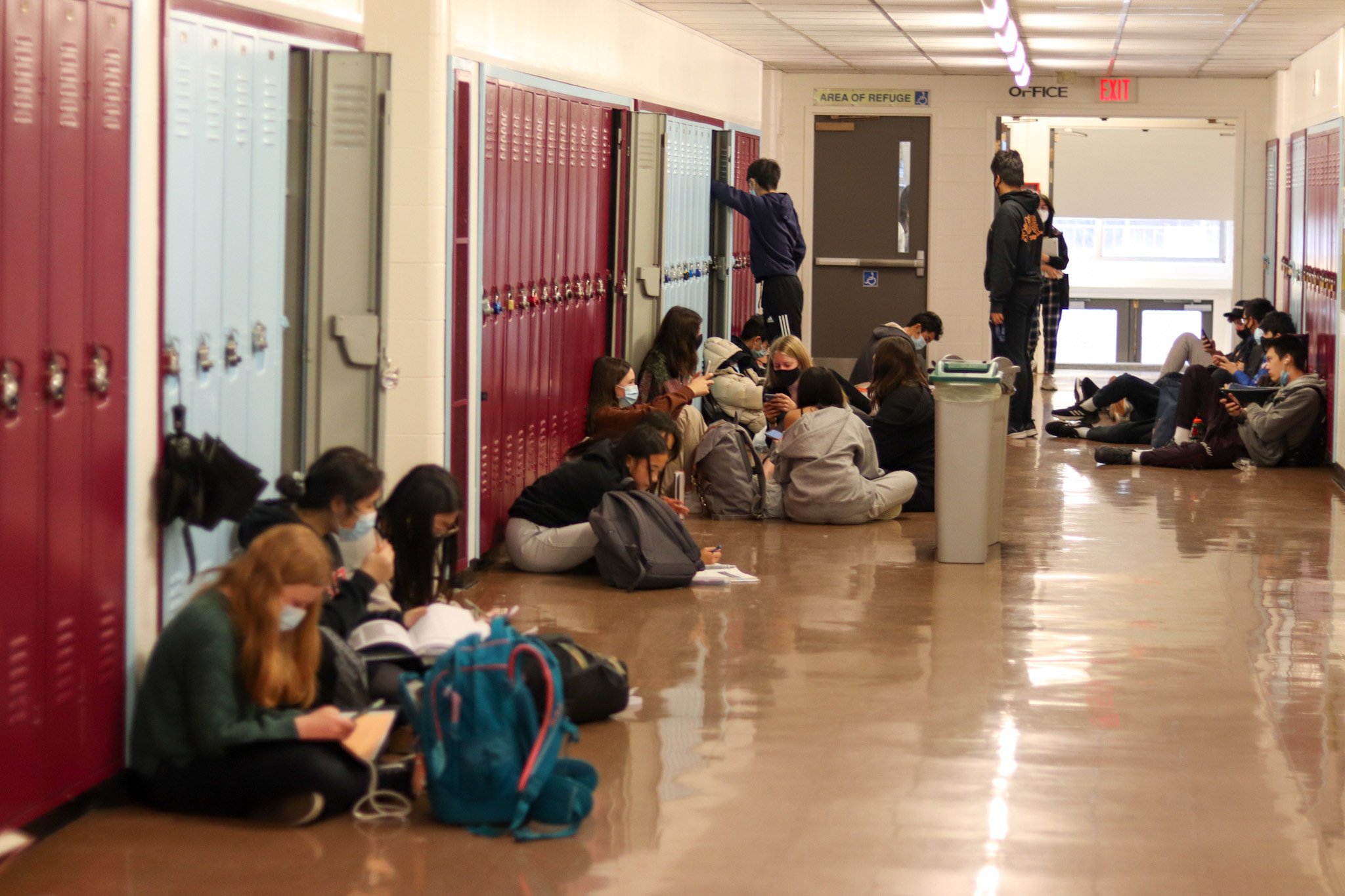How Hamberites Use FIT
Photo by David Zhang
The pandemic has brought many changes to the Vancouver School District over the last 20 months. In the 2020-21 school year, student schedules were changed significantly, with the District switching to a quarter system with only part-time in-school attendance.
This year, the schedule structure has been altered once again, this time into a semester system with full-time in-school attendance. Introduced with this system is Flexible Instructional Time (FIT), a 50-minute multipurpose period during the day on Tuesdays and Thursdays. FIT, alongside the semester system, is being monitored by school officials to determine what works and what does not, but what do Hamberites think of FIT?
Over the first few months, FIT seems to have helped some students who struggle with procrastination. “It’s really helpful for a lot of students to study for tests in between classes, especially because they procrastinate,” says Isabelle Jang (10). Procrastination is common among high school students, and FIT’s convenient timing was cited as an opportunity for students to study.
FIT’s benefits extend far beyond helping procrastinators, however. It also provides a time for students to finish their homework early and to work on projects with their peers, according to Jaya Wood (9). Students can also receive feedback from their friends and teachers before handing in their assignments.
Fans of FIT say another benefit of the block is that it helps students space out their study time. Many students struggle with the workload of their classes, especially when they have after-school commitments to attend. “With FIT, we can do homework throughout the day instead of rushing through it all after school,” explains Teresa Deruchie (9).
Beyond that, studying at school also helps keep students on-task. According to Austin Witter (10), the atmosphere during FIT “allows you to stay in the school mindset.”
But where do students spend this valuable study time? The answer is: everywhere, really. Isabelle Jang, for example, prefers staying in the classroom of her favourite teacher.
Meanwhile, many other students, including Teresa Deruchie, spend their time with their friends in the hallways up against the lockers. For students such as Tristan Yan-Klassen (10) who prefer a quieter atmosphere, the library is a popular choice.
One criticism among students is that some teachers use FIT to teach extra classes. This is especially common in off-timetable courses or other classes that require extra time commitment or do not work within the confines of the semester system.
According to one student, who preferred not to be named to avoid jeopardizing their standing with a teacher, these types of classes still provide learning opportunities for students, but can take away precious study time that students could otherwise utilize.
The concept of an in-school flexible time is not entirely new this year. Last year, Flex Time was introduced during the quarter system as a period when teachers could hold classes or students could study. Students’ attendance for Flex was not required unless the student had a class during it.
Many students find that this year’s FIT is a great alternative to Flex Time, as it is a non-instructional block within school hours. “FIT is more of a set time for working rather than how Flex was more of a ‘stay after school’ type of deal, so I think that FIT works better,” says Lauren Kolmel (9).
There has been much speculation over whether FIT will be implemented permanently. While the VSB has not officially released a statement on this yet, the new concept has gained a lot of positive reactions from Hamberites. “We are currently on a two-year trial for the semester system, with FIT included within that, and feedback from all around the district has been quite positive, so I think hopefully it will stay around,” says Hamber Vice Principal Ms. S. Blair. The opportunities that FIT offers also align with the student-focused learning principles that the VSB has been implementing since around 2017.
When asked whether they think FIT should be kept permanently, many students, such as Hailey Whittaker (9), agreed that it should be implemented into regular school schedules, regardless of whether the semester system is kept or not. “It’s good to get some time to actually get our homework done during school,” she explains.
Meanwhile, other students, including Isabelle Jang, say that FIT should continue to exist if the semester system continues in future years, but if the pre-pandemic linear system is reinstated, then FIT should not be implemented.
Regardless of its ultimate fate, however, Hamberites find that FIT provides many great opportunities so far, and it will likely continue to do so this year.

